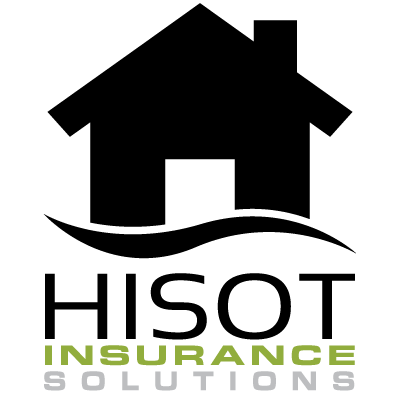Home Insurance Solutions Of Texas - HISOT
Welcome, one size does not fit all.
Many items to consider - monthly premium, deductible and what is and is not covered. Let one of our professional licensed agents work for you to find what is the right fit for you.
Policys, Coverages & Optional Coverages
Life - Term & Whole Life, Commercial & Umbrella insurance.
Coverages and features vary depending on the type of policy and the insurance company. Read any policy you’re considering before you buy it. Pay special attention to the exclusions section, which lists the things your policy does not cover, and to the declarations page, which shows the amount of each of your coverages and deductibles.
Term Life - is often the most affordable coverage because it offers protection for a specific number of years.
Features
- Get valuable coverage at an affordable price
- Help cover specific financial responsibilities like a mortgage or college expenses
- Supplement a permanent policy or work policy
Term life insurance is life insurance that provides coverage at a fixed rate of payments for a limited period of time, the relevant term.
After that period expires, coverage at the previous rate of premiums is no longer guaranteed and the client must either forgo coverage or potentially obtain further coverage with different payments or conditions.
If the life insured dies during the term, the death benefit will be paid to the beneficiary. Term insurance is typically the least expensive way to purchase a substantial death benefit on a coverage amount per premium dollar basis over a specific period of time.
Term life insurance can be contrasted to permanent life insurance such as whole life, universal life, and variable universal life, which guarantee coverage at fixed premiums for the lifetime of the covered individual unless the policy is allowed to lapse.
Term insurance is not generally used for estate planning needs or charitable giving strategies but is used for pure income replacement needs for an individual. Term insurance functions in a manner similar to most other types of insurance in that it satisfies claims against what is insured if the premiums are up to date and the contract has not expired and does not provide for a return of premium dollars if no claims are filed.
As an example, auto insurance will satisfy claims against the insured in the event of an accident and a homeowner policy will satisfy claims against the home if it is damaged or destroyed, for example, by fire. Whether or not these events will occur is uncertain. If the policyholder discontinues coverage because he or she has sold the insured car or home, the insurance company will not refund the full premium.
Whole Life - Before you buy, consider if you need whole life insurance, rather than another type of permanent insurance or a term policy. Whole life insurance fits the bill for some consumers, but term life insurance is sufficient for most people. Whole life insurance is a good policy to buy if you -
Features
- Need coverage that lasts for your entire life
- Want the payments to stay the same (called level premiums)
- Want a guaranteed return on the cash value that builds up within the policy
Choose the right amount of coverage.
To find the right coverage amount, decide what you want the policy to accomplish. A relatively small policy — $10,000, for example — may pay for a funeral. You might need a larger policy if you have other priorities, such as funding a trust for a child with special needs.
Not all insurers that offer whole life sell policies in small amounts of coverage, and those that market small policies don’t always sell large ones.
Some whole life policies offer a simplified application process. You answer some health questions, but you don’t have to take a medical exam. Others ask no health questions and promise that you’ll be accepted.
These options are worth considering if you’ve been turned down for standard life insurance due to health problems — but you can find more affordable coverage if you’re in good health, and the policies have a few other downsides. The death benefits offered are relatively small, and the costs per $1,000 of coverage are higher than for policies that require a medical exam. In addition, these policies don’t pay the full death benefit if you die within the first few years of coverage.
Even if you have some health issues, you can generally find the best price by applying for a “fully underwritten” policy that asks health questions and requires a medical exam.
Look at the rate of return on cash value.
Whole life insurance policies feature a “cash value” savings account. A portion of your premium is invested in the account, which grows slowly on a tax-deferred basis. You can borrow against the cash value, use it to buy more coverage or surrender the policy for the cash. (The death benefit is reduced if you don’t repay a loan, and it disappears altogether if you surrender the policy.)
Whole life insurance policies guarantee a minimum growth rate on the cash value. Some policies can perform even better if they earn dividends, which are portions of the insurer’s financial surplus. Only mutual insurance companies, which are owned by policyholders rather than outside shareholders, pay dividends.
They aren’t guaranteed, but they are worth taking into account when you compare policies.
Life insurance companies provide illustrations of how each policy’s cash value could perform. Always ask which parts of the illustration are guaranteed. For example, a mutual insurer will give cash value projections based on the payment of dividends, which aren’t guaranteed.
Examine extra policy features.
Riders are coverage features you can add to your policy, usually for an extra cost. Examples include a chronic illness rider, which lets you access some of the death benefit if you have a serious illness, and a “disability waiver of premium” rider, which lets you skip payments if you become disabled. Available types and costs of riders vary by insurance company. Make sure your policy has the riders you want.
Check the insurer’s financial strength rating.
Find the financial strength rating of each insurer you’re considering.
You can find these through rating firms, such as A.M. Best. Financial strength is important because a strong company has a better chance of being around decades from now to pay claims. Any company with an A.M. Best rating of B+ or higher is a good choice; companies rated B and below are more vulnerable, in A.M. Best’s opinion.
You can look up an insurer’s complaint ratio score on the National Association of Insurance Commissioners website. The ratio is based on the number of complaints filed against the insurance company with state regulators and is adjusted for market share. The national median is 1, so a score higher than 1 means the company received a larger number of complaints for its size.
Texas Business Owner Policy
Business owner program (BOP) policies are a common type of commercial policy primarily for small businesses. BOP policies combine property and liability coverage in one policy.
Commercial property policies provide various types of coverage, either as part of the base policy or through policy endorsements. Endorsements expand or amend a policy's coverages and usually increase your premium. You can buy certain coverages as separate standalone policies.
Commercial General Liability Insurance
Commercial General Liability (CGL) insurance protects business owners against claims of liability for bodily injury, property damage, and personal and advertising injury (slander and false advertising). Premises/operations coverage pays for bodily injury or property damage that occurs on your premises or as a result of your business operations.
Products/completed operations coverage pays for bodily injury and property damage that occurs away from your business premises and is caused by your products or completed work. Excess liability insurance pays for covered losses that exceed your CGL policy's dollar limit.

Why You Should Consider Higher Auto Liability Insurance Limits and a Personal Umbrella
Often people shopping for insurance are looking for the lowest possible premiums and the minimum limits allowed by law.
What they may not realize is that carrying the lowest possible auto and home insurance liability limits, may leave their financial security at risk.
What are Auto Limits?
The liability coverage on your auto insurance policy pays for any bodily injury or property damages you may be responsible for after you’re in an accident. You may hear your insurance agent say, “your current auto limit is 50/100/50.” The three numbers in your auto limits represent the maximum amount your insurance company will pay as a result of an auto accident you cause. For example, here is how 50/100/50 limits break down:
- 50 Bodily Injury Coverage-$50,000 per person for injuries
- 100 Overall Maximum Coverage-$100,000 will be paid out for injuries total per accident
- 50 Property Damage Coverage-$50,000 per accident will be paid for the damage you do to the property of others
Why Should I increase my Auto Limits?
Insufficient auto liability limits, can leave you paying out of pocket, for damages after an accident. If policy limits are exceeded after an at-fault accident, you are legally obligated to pay for any remaining damages. Your insurance company is only liable to pay up to the limit dictated by your auto policy. As a rule of thumb, the amount of liability insurance coverage you carry should be sufficient enough to protect your assets if you are found at fault in an accident.
Consider these recent claims paid out by our partners at Arbella Insurance:
- A driver on their cell phone collided with an SUV which then ran off the road. The driver of the SUV sustained multiple injuries. The driver was found at fault for distracted driving, and the case resulted in a verdict for $3,400,000. If the responsible driver had limits of 50/100/50 then the maximum amount their insurance company paid for injuries was $50,000. A judgement for 3.4 million dollars, leaves the driver responsible for paying the remaining 3,350,000 million dollars in damages.
- A pick-up truck hits a motorcyclist from behind. The cyclist claims neck and back injuries and it awarded a $510,000 settlement. The driver of the pick-up truck is found at-fault, if he has limits of 50/100/50, his policy would pay a maximum of $50,000 for injuries and he is responsible to come up with the remaining $460,000 to cover the cost of the settlement.
Additional reasons to increase your auto liability coverage:
- You have a teen driver on your auto insurance policy: teen drivers represent a higher risk of accident due to their lack of driving experience.
- You own a home or other properties: If you’re found at-fault for an auto accident where the judgement exceeds your policy limits, you must pay the remainder out-of-pocket which could compromise assets such as your family home or vacation property.
- You have multiple drivers on your auto policy: Every additional driver on your auto insurance policy increases your risk of accident.
- You participate in a carpool: If you help out on a regular basis by driving your children’s friends to and from school, or you reduce your carbon footprint by driving a carpool to work, your total exposure for injuries in the event of an accident is increased.
- You drive a large truck or SUV: Larger vehicles have the potential to cause more property damage and/or more bodily injury in the event of an accident.
We recommend carrying minimum auto liability limits of 250/500/250 and purchasing additional protection in the form of a personal umbrella insurance policy.
What is a personal umbrella policy?
An umbrella policy is an extra layer of liability insurance that kicks in after your regular policies, such as your homeowners or auto insurance, have reached their limits. While the highest available liability limits are typically 250/500/250, an umbrella policy has a maximum limit of $5,000, 000.
Adding an umbrella insurance policy to your existing coverage is more affordable than you may think. For instance, a $1 million dollar umbrella policy can cost less than $300 annually.
While increasing your liability insurance limits and adding a personal umbrella, costs more than bare minimum coverage, it can end up saving you money in the event of an accident. In today’s world, even the smallest accident can result in a lawsuit with a large financial judgement. We will assess your level of risk and ensure your liability limits are sufficient to keep you protected.
When it comes to insurance, you need more than a great price. You need advice. With thirty years and counting of experience, we offer the advice you can trust and affordable home insurance, car insurance, business insurance and more. For more information on auto liability insurance limits, adding a personal umbrella or any other insurance coverage, feel free to reach out to us at -281-293-7744 Toll Free 1-877-260-0808.
Can this happen to me - Yes No Yes?
Your dog could bite the neighbor’s kid. Your teen driver could hit a cyclist. A guest could fall down your stairs. A rainy morning commute on worn-out tires could result in a multi-car accident. And you could be held liable to others for the cost of damages – injuries, property destruction, emotional distress, lost wages and more.
Good thing you have insurance. But, wait, your policy covers $300,000 of liability, and, in a lawsuit, you’re judged liable for $1 million. That leaves $700,000 left to pay. How will you cover it?
If you have umbrella insurance and your policy covers the incident, the additional $700,000 will come from your policy. If not, it will come from the assets you have now, such as your home and savings, and from future assets, such as your wages or inheritance.
The fact is, it only takes one serious accident and a resulting lawsuit to put everything you own – and will own – at risk. And it only takes one umbrella policy to help protect it all.
Coverage - A few items to consider
- Personal umbrella policies typically offer $1, $2, $3, $4 or $5 million of liability coverage. Consider your net worth when choosing your coverage –you could be sued for everything you have
- If you insure a motorcycle, ATV, golf cart, snowmobile, motorhome or watercraft, your umbrella policy may provide additional liability coverage on top of those policies as well. Be sure to check with your carrier to confirm your coverage on these types of vehicles
- A single umbrella policy typically covers all of your family members who are residents of your household
Requirements
- An umbrella policy is not a stand-alone policy. Your insurance carrier will typically require you to meet certain qualifications, such as having an auto policy with a certain level of liability coverage, in order to purchase umbrella insurance
- Even when you have umbrella insurance, your car or home insurance is your first line of defense. For example, if you are liable for $2 million in a car accident and your auto insurance covers $500,000 of liability, your auto policy covers the first $500,000. Your umbrella policy covers the remaining $1.5 million, assuming your policy covers the incident and that you purchased that much coverage. If you are liable for $250,000 in an accident on your property and your homeowners insurance covers $300,000, your umbrella policy won’t be needed
Essentially
An umbrella policy gives you excess liability coverage on top of what your other policies provide. If you’re at fault for a serious accident, you’ll need it. Umbrella insurance also gives you liability coverage in instances where other policies don’t. Examples include driving in a foreign country or renting a boat.
If you are curious
- About how umbrella insurance might play a role in protecting the life you’ve built or plan to build, or -
- If you can afford an umbrella policy, you should consider, if you have your home and auto insured, the average $1 million policy is approx. $300.00 annually
- Use our Quick Quote form to get started
We shop close to 30 carriers for you to get the best coverage and best price for your home and auto - best call you will ever make 281-293-7744 Toll Free 1-877-260-0808.
We are always striving to make your insurance experience as efficient and convenient as possible. Thanks for a Great Year!

Click to learn more smart insurance buying tips.




